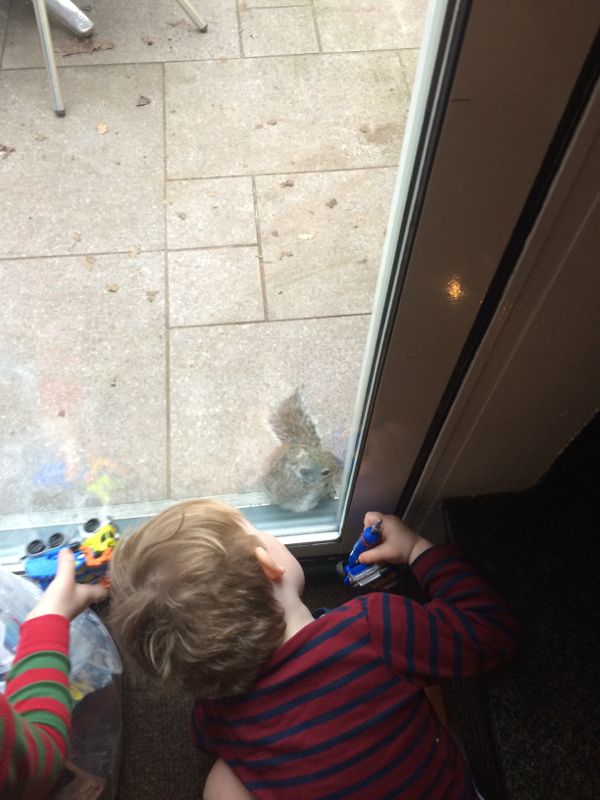Understanding Soundproofing Principles
When you aim to improve the soundproofing of a door, your focus should be on two fundamental aspects: the mass and density of the barrier, and the elimination of gaps to create an airtight seal.
Significance of Mass and Density in Soundproofing
Mass is crucial in soundproofing because sound waves lose energy when they have to pass through heavier materials. By increasing the mass of a door, you’re essentially creating a thicker barrier that sound waves struggle to penetrate. Density plays a similar role, as denser materials have tightly packed particles that make it harder for sound to travel through.
In practice:
- A door made of solid wood would be more soundproof than one made of a lighter, less dense material.
- Adding layers, such as an acoustic panel, to the door can increase its mass and improve its soundblocking capabilities.
Role of Gaps and Air Tightly-Sealed Spaces
Even the smallest gap or air gap can significantly reduce the effectiveness of your soundproofing efforts. Sound travels through air, so if there’s a way for air to get through, sound will follow.
To address this:
- Inspect the entire door for cracks, and seal any you find with acoustic caulk.
- Ensure the door fits snugly in its frame, and consider weather stripping or door sweeps to eliminate gaps.
- A proper seal doesn’t mean the space is hermetically sealed but should be as airtight as reasonably possible for sound mitigation.
Soundproofing Glass Doors
When looking to reduce noise through your glass doors, effective solutions include sealing gaps, installing heavy drapes, and applying sound-dampening materials for enhanced privacy and comfort.
Weatherstripping to Seal the Edges
To efficiently soundproof your sliding glass doors, weatherstripping is a key step. It helps in sealing off the gaps around the door frame where air—and consequently sound—can pass through. You’ll want to:
- Inspect the full perimeter of your glass door for any existing gaps.
- Apply high-quality weatherstripping around the edges to create a snug seal.
- For added effectiveness, use acoustic sealant to address any remaining leaks.
Using Acoustic Curtains for Glass Doors
Heavy acoustic curtains are a simple yet effective method to enhance the sound barrier of your glass doors. By doing the following, you can drastically cut down on noise:
- Choose curtains with dense fabrics, designed specifically for sound absorption.
- Ensure they are correctly sized to fully cover your glass doors, reaching beyond the edges for maximum coverage.
Applying Film and Mass-Loaded Vinyl
Applying mass-loaded vinyl (MLV)—a sound-blocking material—directly onto your glass doors can substantially mute external noise. Here’s how to utilize it:
- Measure your glass door to determine the amount of MLV needed.
- Cut the MLV to size and carefully apply it to the door, ensuring no air gaps.
- For additional sound insulation, consider adding a transparent film to your glass door that also helps with sound reduction.
Improving Wooden Door Acoustics
When you’re aiming to improve the acoustics of a wooden door, it’s essential to focus on two main modifications: establishing a proper seal with door sweeps and seals, and enhancing the door with acoustic foam. These upgrades can significantly reduce sound transmission through the door.
Soundproofing with Door Sweeps and Seals
Door Sweeps: A door sweep attaches to the bottom of your door, closing the space between the door and the threshold. This simple fix can greatly enhance your wooden door’s soundproofing capabilities. Here’s how to do it:
- Measure the width of your door.
- Choose a door sweep that fits the size and style of your door.
- Attach the door sweep, ensuring it lightly brushes against the threshold for a snug fit without impeding the door movement.
Seals: For other gaps around your wooden door, acoustic seals are the answer. They attach to the door frame to create a tight acoustic barrier. Follow these steps:
- Identify any gaps around the door frame—common areas include the top and both sides of the door.
- Use acoustic seals as a barrier to fill these gaps.
- Apply acoustic caulk to seal any smaller leaks that a door seal can’t cover.
Door Frame: If gaps between the door and the frame are significant, consider using a combination of door seals and caulk to ensure a continuous seal around the entire frame. This consistency is key to preventing sound leaks.
Enhancing Wooden Doors with Acoustic Foam
Acoustic foam works by absorbing sound waves, diminishing noise transmission through the door. It’s particularly useful if you’re dealing with a hollow-core door and wish to improve its sound-dampening ability. Here’s what you can do:
- Opt for high-density acoustic foam panels; these are more effective at blocking and absorbing noise.
- Cut the panels to match the size of your wooden door.
- Attach them directly to the door using an appropriate adhesive that won’t damage the wood.
Remember, if you have a solid core door, it’s naturally more soundproof due to its density, but adding acoustic foam can still be beneficial. Make sure to cover the surface evenly for consistent sound reduction.
By carefully sealing gaps with sweeps and seals and augmenting with acoustic foam, you can appreciably enhance your wooden door’s soundproofing qualities.
DIY Soundproofing Techniques
DIY soundproofing can be both cost-effective and satisfying. With the right materials and a bit of elbow grease, you can significantly reduce the noise passing through your glass or wooden doors.
Utilizing Household Items for Quick Fixes
Heavy Curtains: Add heavy curtains over your doors to dampen sound; the denser the material, the better they’ll absorb sound waves.
- Rug: Place a thick, dense rug in front of the door. The rug acts as a sound barrier and helps to absorb vibrations.
Making Your Own Acoustic Panels
Acoustic Foam Tiles: Attach acoustic foam tiles directly to the door. They are designed to trap and diffuse sound waves.
- Materials: You will need:
- Acoustic foam tiles
- Adhesive (double-sided tape or spray adhesive)
- Installation:
- Measure your door to determine how many tiles you need.
- Cut the acoustic foam tiles to size, if necessary.
- Attach using your chosen adhesive, ensuring no gaps between tiles.
Addressing Specific Door Types and Features
When soundproofing, the type of door you’re working with greatly influences your approach. Features such as the door’s operation method, materials, and the presence of glass play a significant role in the selection of soundproofing techniques.
Handling Sliding Doors and French Doors
Sliding Doors: Your sliding glass doors can be a challenge to soundproof due to their large surface area and potential for gaps. To improve soundproofing:
- Seal the gaps: Use weatherstripping to seal the space between the sliding doors and the frame.
- Add mass: Hanging heavy curtains made of velvet or another dense fabric can help dampen sound. Consider curtains with multiple layers for increased effectiveness.
- Double glazing: If possible, upgrade to double-glazed glass, as it provides an additional barrier to sound.
French Doors: These elegant doors often have multiple glass panes and require special attention.
- Upgrade the glass: Similar to sliding doors, consider double-glazed glass if your French doors are single-glazed.
- Use drapes: Heavy drapes not only add a layer of sound insulation but also enhance the visual appeal of the room.
- Seals are vital: Ensure all edges and junctions are properly sealed with high-quality acoustic seals.
Working with Pocket and Barn Doors
Pocket Doors: These doors slide into the wall and are often used to save space.
- Seal the perimeter: Install seals around the door frame to prevent sound from leaking around the edges.
- Soundproofing materials: Apply sound-dampening materials, like acoustic panels, to the door itself if it’s not made from a sound-reducing material.
Sliding Barn Doors: While stylish, their design can leave gaps that let sound through.
- Filling gaps: Placing soundproofing sweeps at the bottom of the door and using adhesive weatherstripping around the frame can help mitigate this issue.
- Mass-loaded vinyl: A sheet of this dense material can be attached to the face of the door to block sound. Trim it to fit so it doesn’t interfere with the door’s movement.
Remember, each door type has unique characteristics, and treating them for sound can require different approaches and materials.
Measuring Soundproofing Effectiveness
Enhancing the soundproofing of your glass or wooden doors is essential if you’re aiming for a quieter and more peaceful environment. You’ll want to understand sound levels and measure the noise reduction achieved by your upgrades to truly evaluate their effectiveness.
Understanding Sound Levels and Quietness
Sound transmission is measured in decibels (dB); the lower the dB level, the quieter the sound. To grasp the level of quietness a soundproof door can provide, you need to be familiar with the Sound Transmission Class (STC) scale. This numerical rating indicates how well a door can reduce sound transmission. For instance:
- STC 25-35: You’ll likely hear normal speech through the door.
- STC 35-45: Loud speech becomes a murmur.
- STC 45-60: Loud speech is barely audible.
A high STC rating usually means more peace and better acoustics in your space.
Evaluating Noise Reduction after Upgrades
After installing soundproofing enhancements to your door:
- Review the STC Rating: Examine the STC rating provided by the manufacturer of your soundproofing materials.
- Conduct a Noise Test:
- Before installation, use a decibel meter app or tool to record the sound levels of common noises in your environment.
- Record the same noises after the upgrade to compare.
- Notice Changes in Acoustics: Pay attention to the daily sounds that used to disturb your peace. Is there a difference in how you perceive them now?
By understanding these metrics and noticing the acoustic changes in your environment, you can effectively gauge the success of your soundproofing efforts.




